Design of Novel Modified Double-Ended Forward Converter for Stepper Motor Drive
Abstract
1. Introduction
2. Literature Review and Problem Description
- All converters provide isolation between the input and output, ensuring electrical safety and protection;
- They are designed for high power applications, offering high efficiency and power density;
- The converters aim to improve transient response and reduce voltage stress in their respective designs;
- Research gaps exist across all converter types, including the need for optimization under different load conditions, reducing complexity and cost, and improving efficiency.
- Circuit Complexity: Certain converters (e.g., Double-Ended Forward Converter with Primary-Side Double-Pulse Modulation and Secondary-Side Synchronous Rectification) are more complex than the Flyback converter;
- Output Voltage Ripple: The mentioned converters (e.g., Double-Ended Forward Converter with Primary-Side Double-Pulse Modulation and Secondary-Side Synchronous Rectification) exhibit higher output voltage ripple;
- Control Techniques: Dual Active Bridge Converter and Double-Ended Forward Converter with Active Clamp Reset demand complex control schemes;
- Cost and Number of Components: High-Frequency Dual-Active-Bridge DC-DC Converter and Double-Ended Forward Converter with LLC Resonant Tank are costlier due to complex circuitry;
- Renewable Energy Applications: Double-Ended Forward Converter for Renewable Energy and High-Efficiency Double-Ended Forward Converter are designed for renewable energy, offering good performance;
- Optimization Parameters: Research lacks optimization of parameters (e.g., transformer turn ratio, switching frequency, duty cycle) for optimal efficiency in converters.
3. Methodology
3.1. Modelling of the System
3.2. Proposed Converter Topology
- The current sensitive outputs could be used to drive the motor drives (servo motor, stepper motors, etc.,) in robotic applications;
- The control of the motor drives could be done using simple PWM techniques.
4. Results and Discussion
4.1. Simulated Results
4.2. Hardware Module
- High Efficiency: The DEFC has high conversion efficiency due to its bi-directional power flow capability and low conduction losses. This makes it an attractive option for powering stepper motors in robotic systems, where energy efficiency is critical;
- Low Output Ripple: The DEFC has low output ripple due to its transformer-based design, which reduces the effects of parasitic elements such as capacitance and inductance. This feature is important in robotic systems that require precise control of the motor speed and position;
- Compact Size: The DEFC has a compact size due to its transformer-based design, which reduces the number of components needed for power conversion. This feature is important in robotic systems where space is limited;
- Improved Control Techniques: The DEFC has led to the development of new control techniques for stepper motor control in robotic systems. In addition, the use of a proportional-integral (PI) control scheme for DEFC-based stepper motor control, which improved the torque control and position accuracy of the system.
5. Conclusions
Author Contributions
Funding
Data Availability Statement
Acknowledgments
Conflicts of Interest
References
- Soltani, S.; Farzanehfard, A.H.; Sabahi, M. Bi-Directional DC-DC Converter for Driving Stepper Motors in Robotics. IEEE Trans. Power Electron. 2016, 31, 3913–3922. [Google Scholar]
- Kim, H.; Kwon, Y.; Jung, H.; Lee, J. High-Voltage DC-DC Converter for Driving Large Stepper Motors in Industrial Robotic Applications. IEEE Trans. Ind. Electron. 2017, 64, 548–555. [Google Scholar]
- Soltani, S.; Sabahi, M.; Farzanehfard, A.H. A Novel Current-Mode DC-DC Converter for Driving Stepper Motors in Robotics. IEEE Trans. Power Electron. 2017, 32, 6777–6785. [Google Scholar]
- Al-Haddad, S.; Ahmad, A.; Dambhare, S. Optimized Double-Ended Forward Converter for Micro-Stepping Motor in Robotic Applications. IEEE Trans. Ind. Electron. 2018, 65, 334–342. [Google Scholar]
- Chen, Y.N.; Liang, T.J.; Chen, W.L. Design and Implementation of a Bidirectional Double-Ended Forward Converter for High-Torque Stepper Motors in Robotic Gripper Applications. IEEE Trans. Power Electron. 2019, 34, 626–636. [Google Scholar]
- Li, C.; Li, Y.; Li, X.; Gao, J. A double-ended forward converter with primary-side double-pulse modulation and secondary-side synchronous rectification. IEEE Trans. Power Electron. 2021, 36, 799–809. [Google Scholar]
- Han, S.; Seo, H.; Cho, B. Soft-switching-based double-ended forward converter with extended duty cycle for high efficiency in light load condition. IEEE Trans. Power Electron. 2021, 36, 5275–5286. [Google Scholar]
- Yin, L.; Chen, J.; Liu, Y.; Chen, H. A modified double-ended forward converter with voltage multiplier for low voltage high current applications. IEEE Trans. Power Electron. 2021, 36, 844–856. [Google Scholar]
- Zhou, H.; Song, Y.; Cheng, M. A novel dual active bridge converter with improved soft-switching for wide voltage conversion range. IEEE Trans. Ind. Electron. 2020, 67, 10450–10460. [Google Scholar]
- Li, B.; Li, X.; Li, H.; Qian, Z. Design and analysis of a wide-output-range high-power-density dual active bridge converter. IEEE Trans. Power Electron. 2021, 36, 7761–7775. [Google Scholar]
- Premkumar, M.; Ramakrishnan, C.; Kumar, C.; Sowmya, R.; Sumithira, T.R.; Jangir, P. An Improved Quasi-Z-Source Boost DC-DC Converter Using Single-Stage Switched-Inductor Boosting Technique. Machines 2022, 10, 669. [Google Scholar] [CrossRef]
- Yang, Y.; Liu, J.; Chen, Z.; Chen, J. Dual-output double-ended forward converter with LLC resonant tank for renewable energy systems. Int. J. Electr. Power Energy Syst. 2021, 132, 106954. [Google Scholar]
- Li, Y.; Li, B.; Li, H.; Li, C.; Li, Y. Dual-output double-ended forward converter with sliding mode control. IET Power Electron. 2021, 14, 511–518. [Google Scholar]
- Cho, C.; Cho, H.; Jung, K.; Kim, H. Double-ended forward converter with active clamp reset. IET Power Electron. 2021, 14, 488–497. [Google Scholar]
- Zhou, Q.; Xu, Y.; Rasol, J.; Hui, T.; Yuan, C.; Li, F. Reliable Design and Control Implementation of Parallel DC/DC Converter for High Power Charging System. Machines 2022, 10, 1162. [Google Scholar] [CrossRef]
- Li, S.; Li, Y.; Li, H.; Li, B. Design of a high-power density double-ended forward converter with current-transformer-assisted active-clamp circuit. IEEE Trans. Power Electron. 2020, 36, 12506–12516. [Google Scholar]
- Zhang, Z.; Li, Y.; Li, B.; Li, H.; Li, Y. A novel dual-output double-ended forward converter based on digital control. IEEE Trans. Power Electron. 2020, 35, 8095–8107. [Google Scholar]
- Li, Y.; Li, B.; Li, H.; Li, C.; Li, Y. A high-efficiency double-ended forward converter with a novel synchronous rectifier circuit. IEEE Trans. Power Electron. 2020, 35, 12098–12108. [Google Scholar]
- Jeong, J.; Kwak, S.; Choi, S. Degradation-Sensitive Control Algorithm Based on Phase Optimization for Interleaved DC–DC Converters. Machines 2023, 11, 624. [Google Scholar] [CrossRef]
- Singh, S.; Kumar, A.; Singh, A.K.; Kumar, S. Design and analysis of double-ended forward converter for renewable energy applications. Int. J. Renew. Energy Res. 2019, 9, 667–676. [Google Scholar]
- Kumar, K.S.R.; Pandian, A.; Sastry, V.V.; Raveendhra, D. Capacitor Clamped Coupled Inductor Bi-Directional DC-DC Converter with Smooth Starting. Machines 2022, 10, 47. [Google Scholar] [CrossRef]
- Alam, M.M.; Salam, M.A. Performance analysis of double-ended forward converter using different magnetics. In Proceedings of the 2019 7th International Conference on the Development of Renewable Energy Technology (ICDRET), Paris, France, 24–26 April 2019; pp. 1–6. [Google Scholar]
- Mirzaei, M.; Sabahi, M. Design and simulation of a double-ended forward converter for high-power applications. In Proceedings of the 2019 4th International Conference on Power, Control and Optimization, Ho Chi Minh, Vietnam, 10–13 December 2019; pp. 289–294. [Google Scholar]
- Caceres, R.O.; Barbi, I. A boost dc-ac converter: Analysis, design, and experimentation. IEEE Trans. Power Electron. 1999, 14, 134–141. [Google Scholar] [CrossRef]
- Anderson, J.; Peng, F.Z. Four quasi-Z-source inverters. In Proceedings of the IEEE Power Electronics Specialists Conference, Rhodes, Greece, 15–19 June 2008; pp. 2743–2749. [Google Scholar]
- Nguyen, M.-K.; Lim, Y.-C.; Park, S.-J. A comparison between singlephase quasi-Z-source and quasi-switched boost inverters. IEEE Trans. Ind. Electron. 2015, 62, 6336–6344. [Google Scholar] [CrossRef]
- Khan, A.A.; Cha, H. Dual-buck-structured high-reliability and efficiency single-stage buck-boost inverters. IEEE Trans. Ind. Electron. 2018, 65, 3176–3187. [Google Scholar] [CrossRef]
- Kim, K.; Cha, H.; Kim, H.-G. A new single-phase switched-coupled inductor DC-AC inverter for photovoltaic systems. IEEE Trans. Power Electron. 2017, 32, 5016–5022. [Google Scholar] [CrossRef]
- Tang, Y.; Bai, Y.; Kan, J.; Xu, F. Improved dual boost inverter with half cycle modulation. IEEE Trans. Power Electron. 2017, 32, 7543–7552. [Google Scholar] [CrossRef]
- Abdelhakim, A.; Mattavelli, P.; Davari, P.; Blaabjerg, F. Performance Evaluation of the Single-Phase Split-Source Inverter Using an Alternative DC-AC Configuration. IEEE Trans. Ind. Electron. 2018, 65, 363–373. [Google Scholar] [CrossRef]
- Khan, A.A.; Lu, Y.W.; Eberle, W.; Wang, L.; Khan, U.A.; Cha, H. Single-Phase Split-Inductor Differential Boost Inverters. IEEE Trans. Power Electron. 2020, 35, 107–120. [Google Scholar] [CrossRef]
- Rajalakshmi, M.; Chandramohan, S.; Kannadasan, R.; Alsharif, M.H.; Kim, M.K.; Nebhen, J. Design and Validation of BAT Algorithm-Based Photovoltaic System Using Simplified High Gain Quasi Boost Inverter. Energies 2021, 14, 1086. [Google Scholar] [CrossRef]
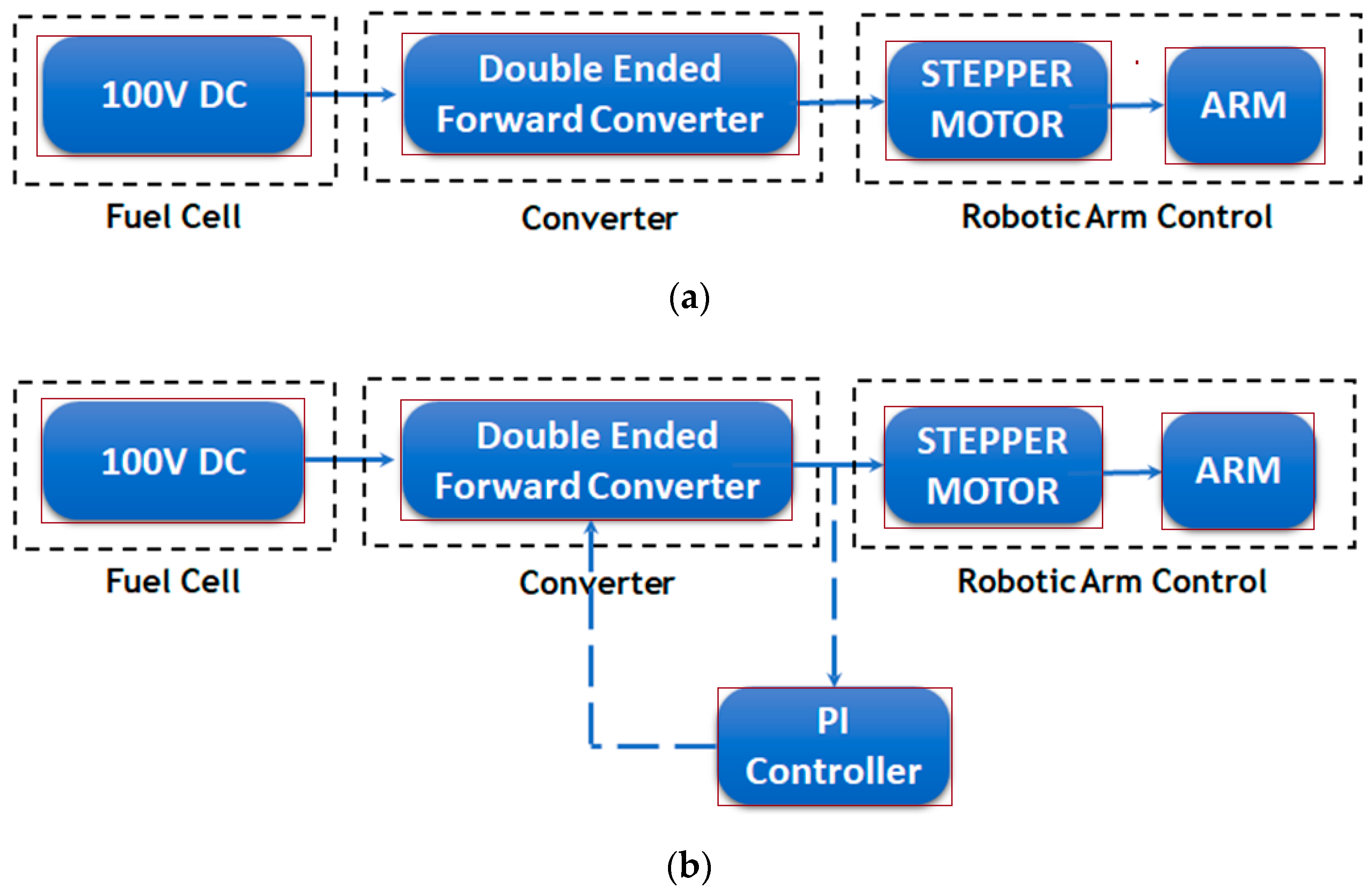
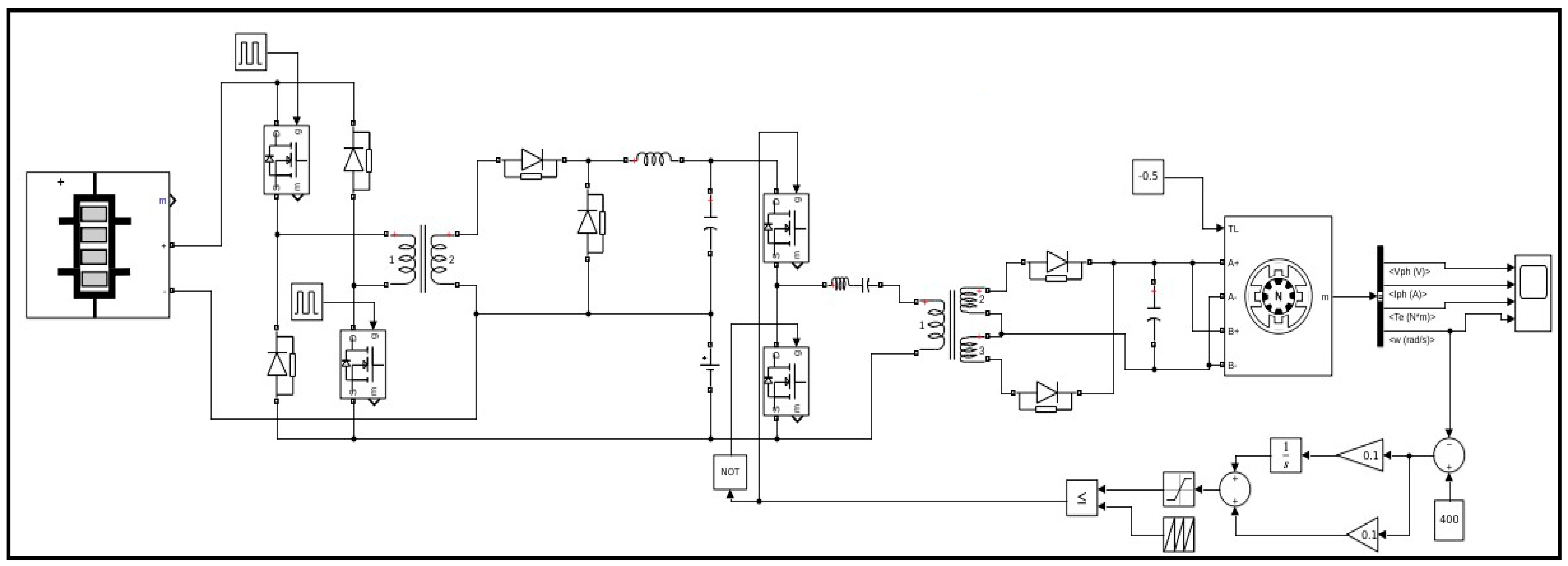
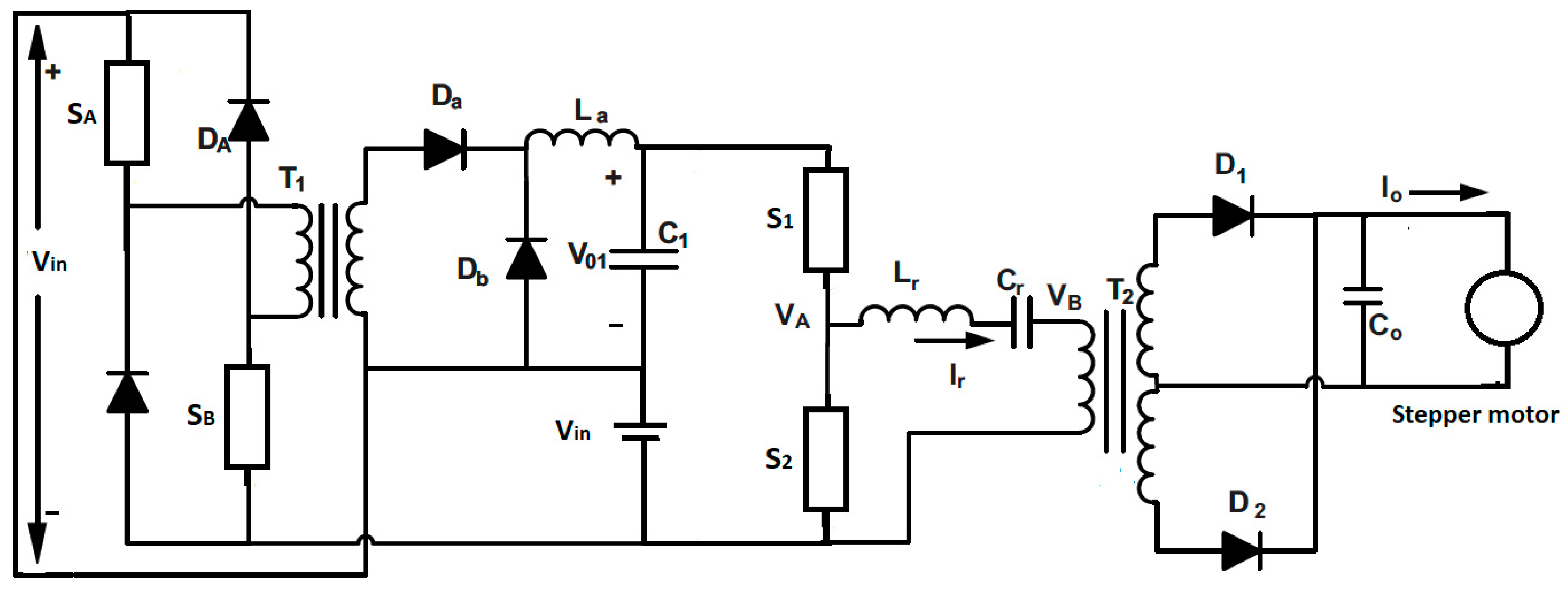
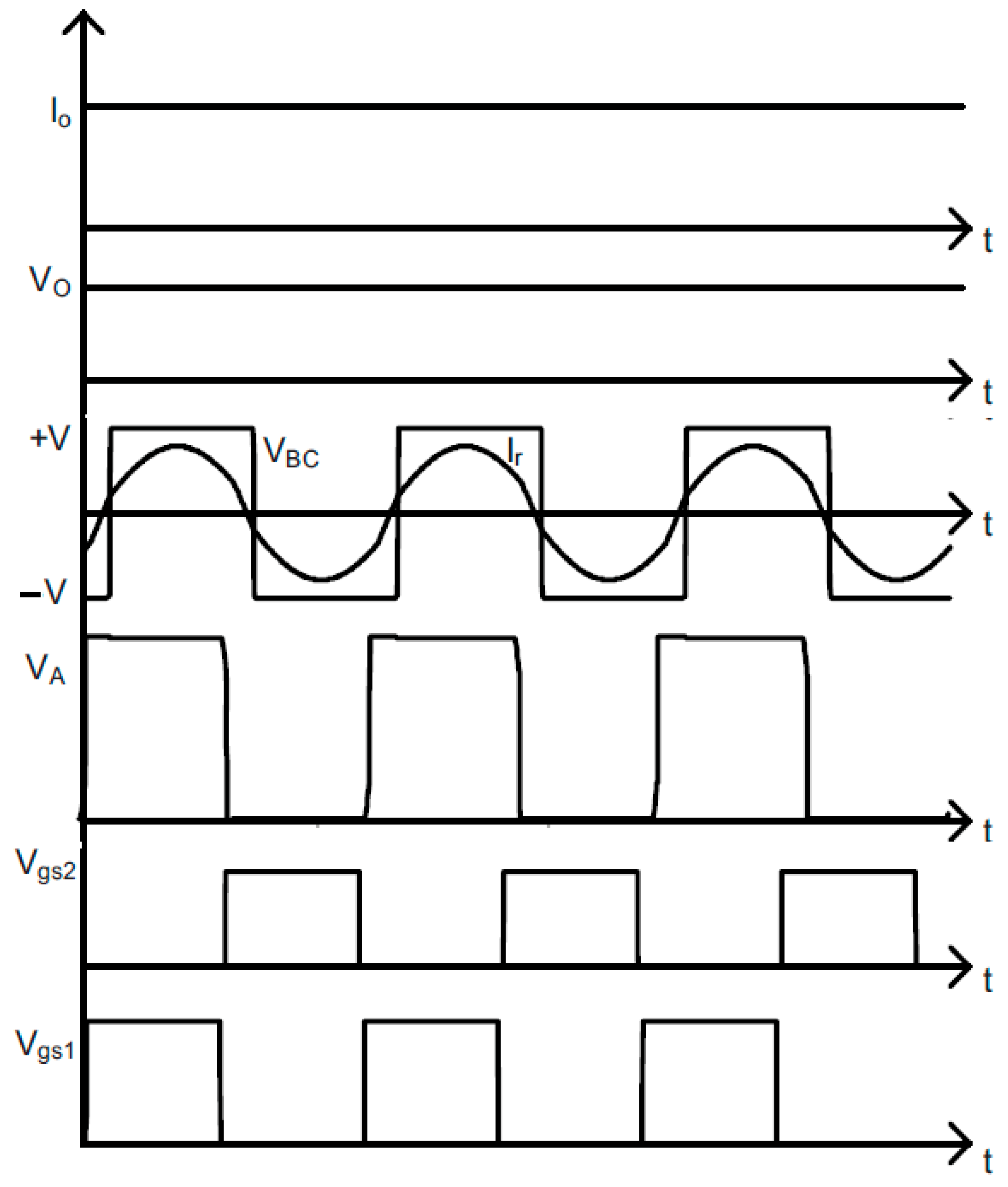
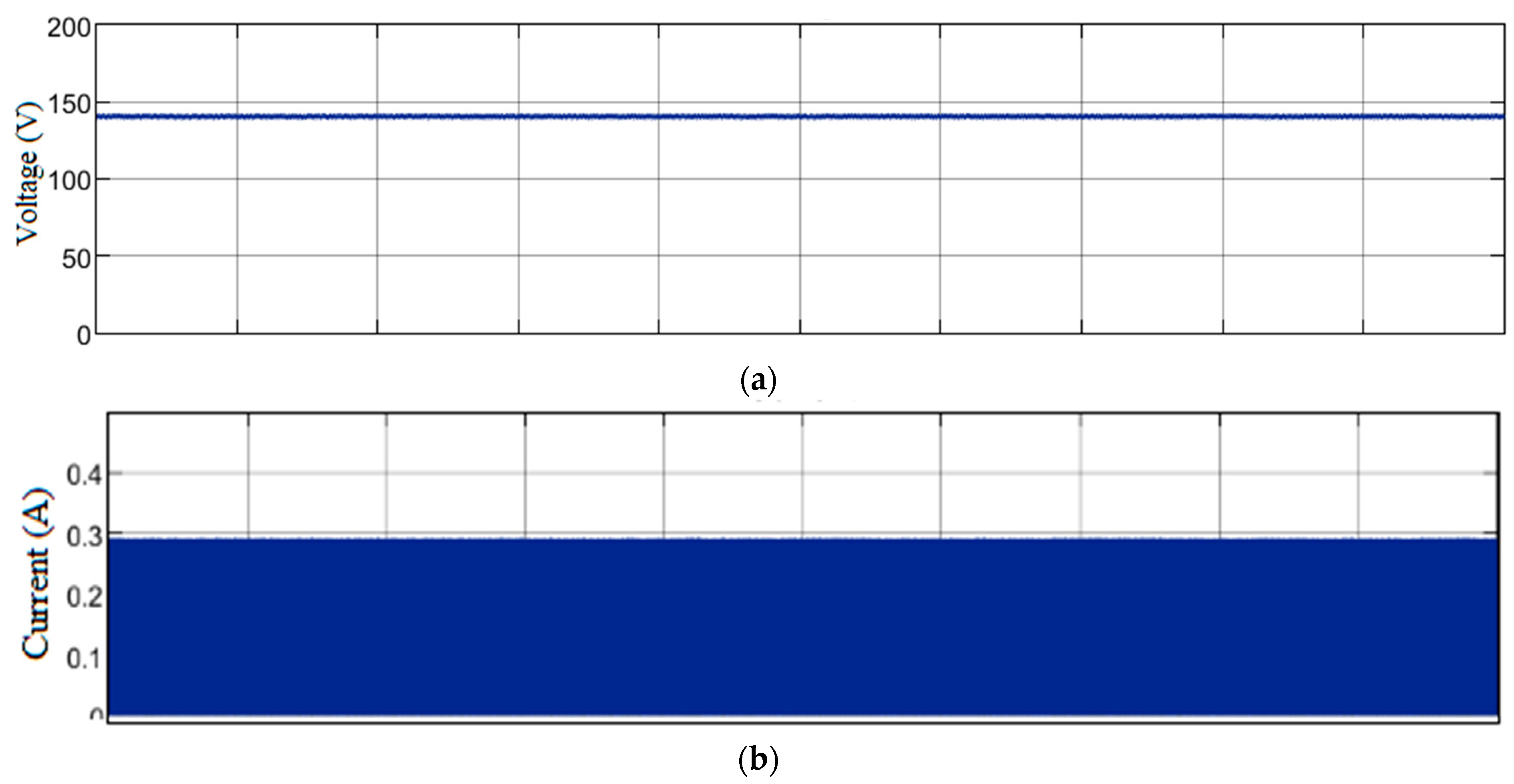
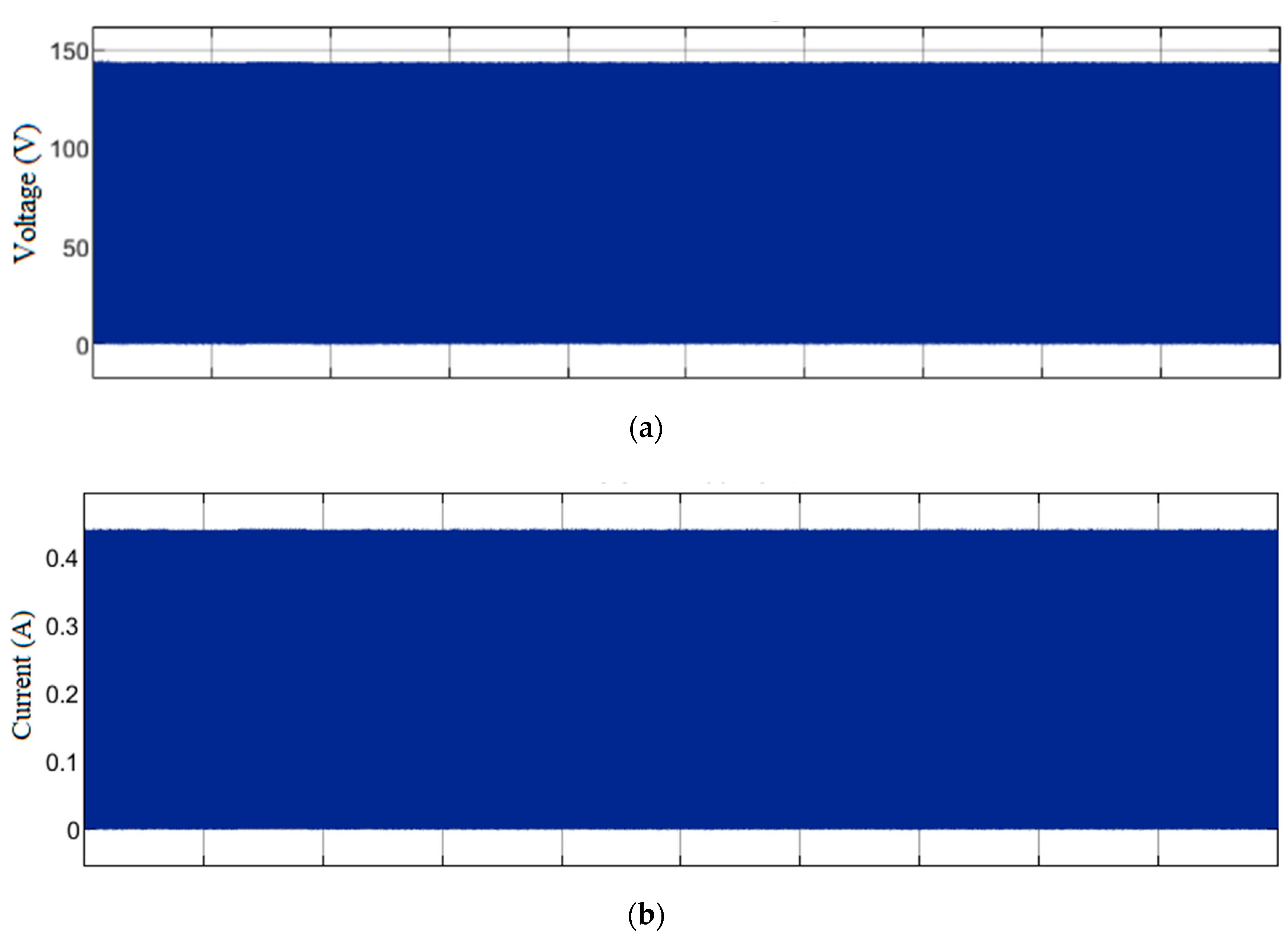
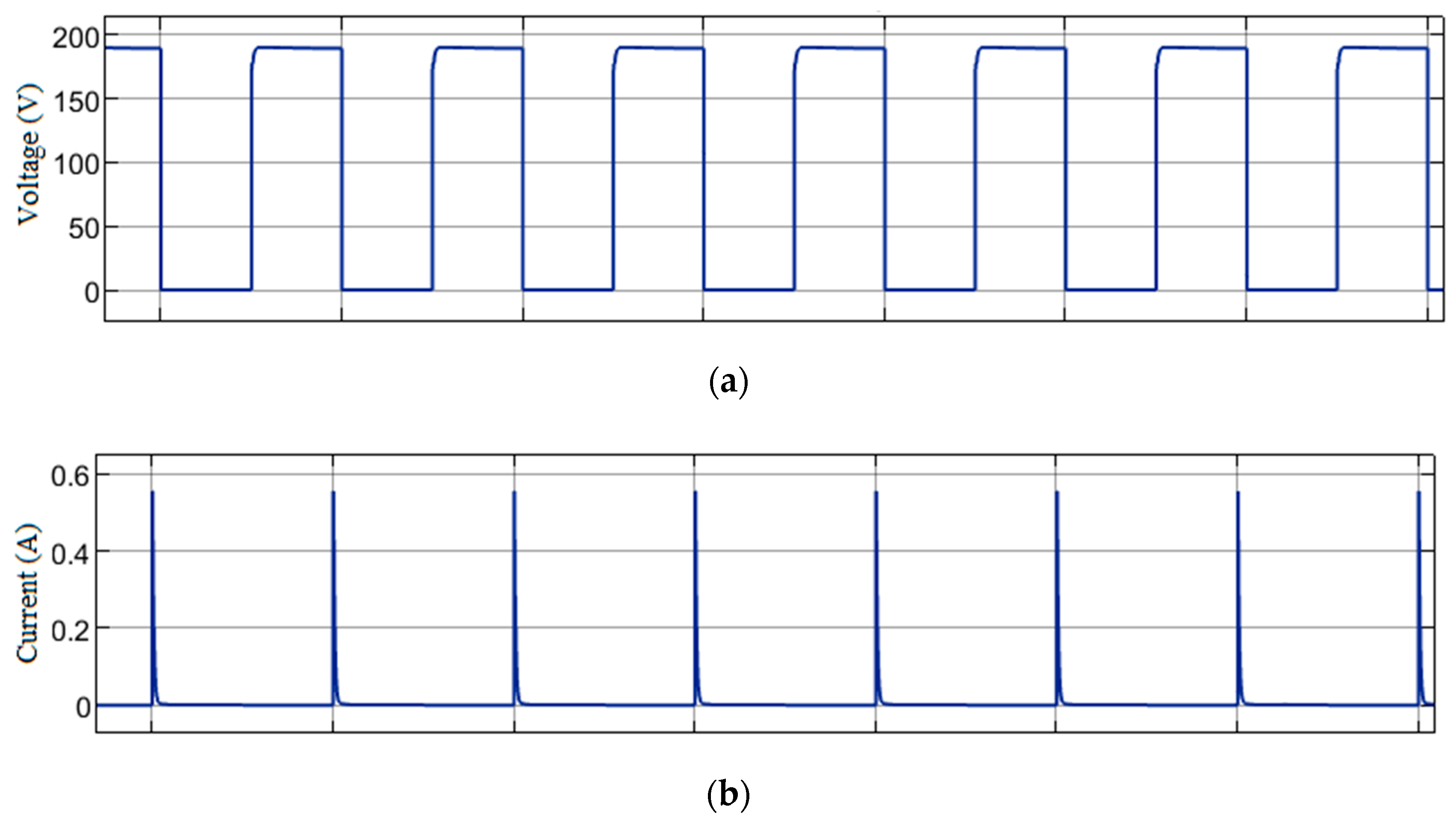


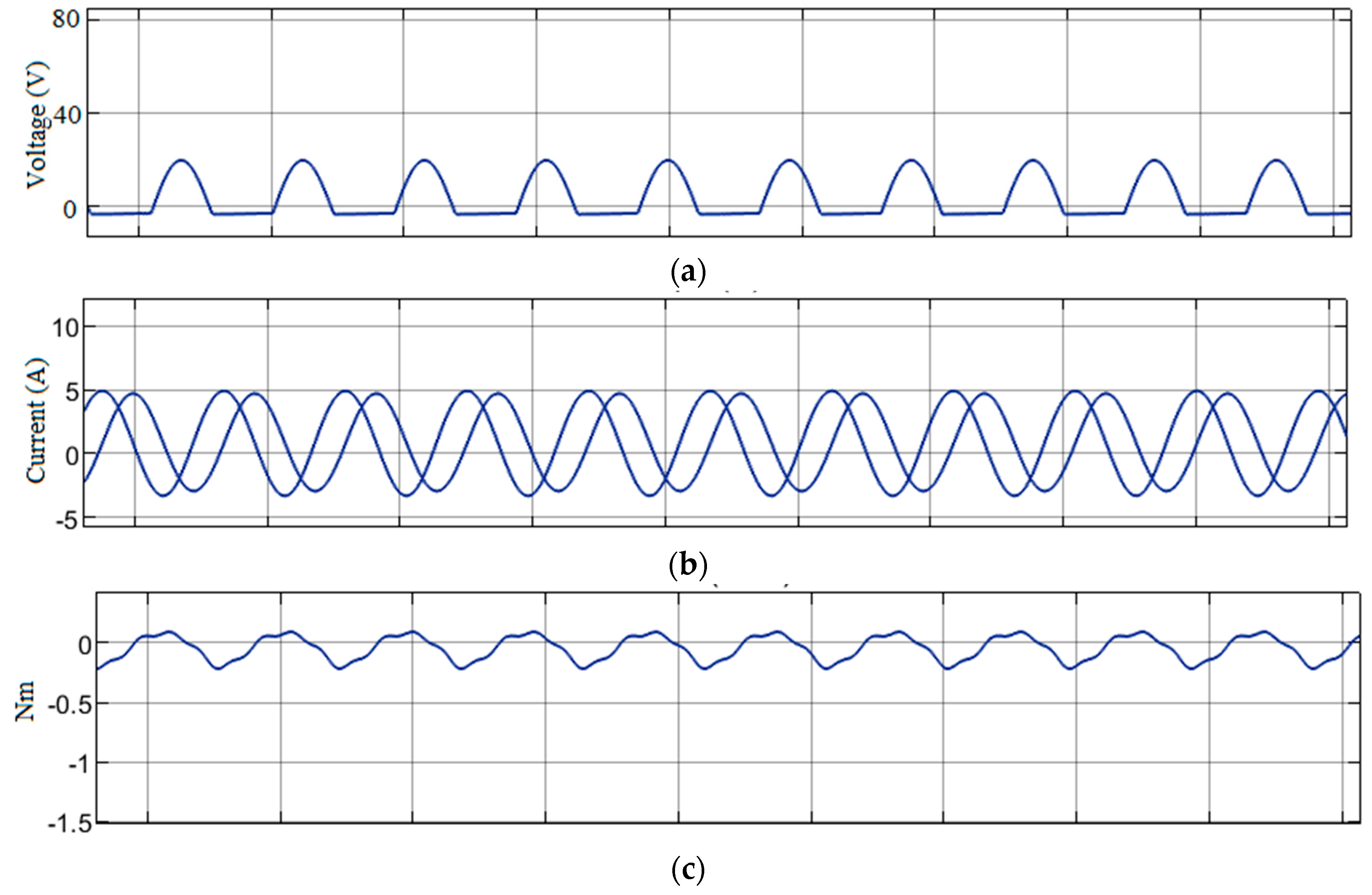




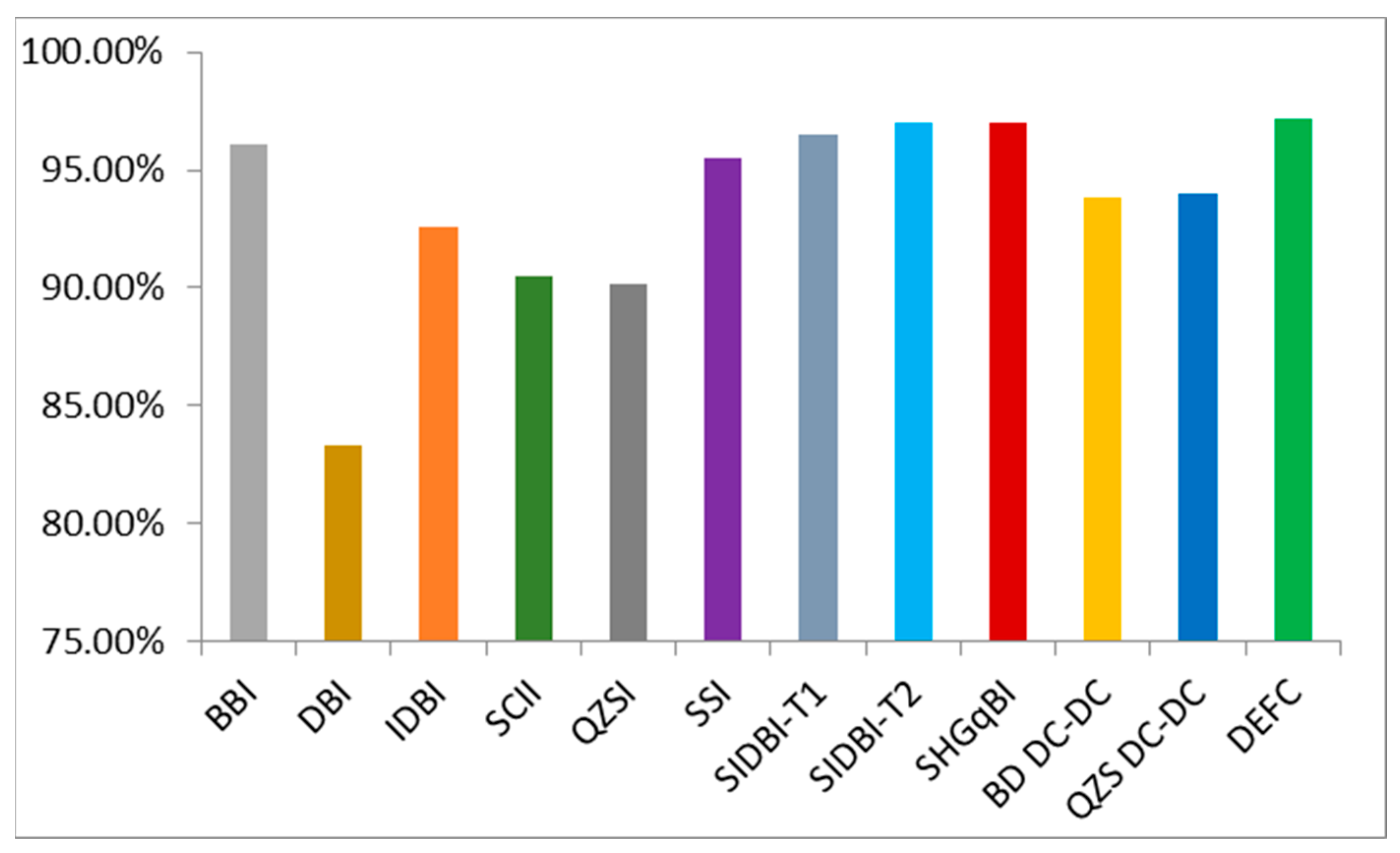
| Terminology | Advantages | Disadvantages | Attained Outcomes | Research Gaps | Ref. |
|---|---|---|---|---|---|
| Double-Ended Forward Converter with Primary-Side Double-Pulse Modulation and Secondary-Side Synchronous Rectification. | Provides isolation between input and output, high efficiency, good for high power applications. | More complex circuitry than Flyback converter, output voltage ripple is higher. | High power density reduced switching losses, good transient response with 95.5% peak efficiency. | Further improvement in efficiency and output voltage regulation under different load conditions. | [6] |
| Soft-Switching-Based Double-Ended Forward Converter with Extended Duty Cycle. | It offers high efficiency in light load conditions. | It has a more complex circuitry compared to other converters. | High efficiency in light load condition with 91.7% peak efficiency. | Further research on optimizing the performance under different load conditions. | [7] |
| Modified Double-Ended Forward Converter with Voltage Multiplier. | It achieves high efficiency in low voltage high current applications. | More complex circuitry than Flyback converter, output voltage ripple is higher. | Low voltage high current application with 95.5% peak efficiency. | Further optimization of the voltage multiplier circuit for better efficiency and reduced voltage ripple. | [8] |
| Dual Active Bridge Converter | High efficiency, high power density, low output ripple voltage | Complex control scheme, limited range of output voltage | High power density, reduced switching losses, good transient response | Further development of control techniques to achieve higher efficiency at light loads | [9,10] |
| Quasi-Z-Source Boost DC-DC Converter | It provides an extra voltage gain compared to the traditional QZS DC-DC converter | Additional capacitor and diode circuit are required. | High efficiency with 94.0% peak efficiency. | Further research on improving efficiency for motoring load | [11] |
| Double-Ended Forward Converter with LLC Resonant Tank | Provides isolation between input and output, high efficiency, low voltage ripple, good for high power applications | More complex circuitry than other converters, higher cost | High efficiency with 98% peak efficiency, reduced voltage ripple, improved transient response | Further research on improving efficiency under different load conditions and reducing cost | [12] |
| Dual-Output Double-Ended Forward Converter with Sliding Mode Control | It offers dual output capability for increased versatility. | More complex circuitry than other converters, higher cost, increased number of components | High efficiency with 94.5% peak efficiency, improved transient response, dual output capability | Further research on improving the efficiency under light load conditions and reducing cost and complexity | [13] |
| Double-Ended Forward Converter with Active Clamp Reset | It reduces voltage stress for improved efficiency. | More complex circuitry than other converters, increased number of components | High efficiency with 97.8% peak efficiency, reduced voltage stress, improved transient response | Further research on improving the efficiency under different load conditions and reducing cost and complexity | [14] |
| Parallel DC/DC Converter | It improves the reliability of the charging system | FPGA-based control techniques are provided which is more complex | No discussion on efficiency enhancement of the proposed system | Further research on improving efficiency with reduced control strategy required. | [15] |
| Design of a High-Power Density Double-Ended Forward Converter with Current-Transformer-Assisted Active-Clamp Circuit | High efficiency, high power density, reduced size and weight | More complex circuitry than other converters, increased number of components | High efficiency with 95.8% peak efficiency, high power density of 96.4 W/in3, reduced size and weight | Further research on improving the efficiency under different load conditions and reducing cost and complexity | [16] |
| A Novel Dual-Output Double-Ended Forward Converter Based on Digital Control | It offers enhanced performance through digital control capabilities. | More complex circuitry than other converters, increased number of components | High efficiency with 95.8% peak efficiency, improved transient response, dual output capability | Further research on improving the efficiency under light load conditions and reducing cost and complexity | [17] |
| A High-Efficiency Double-Ended Forward Converter with a Novel Synchronous Rectifier Circuit | High efficiency, reduced voltage stress, good for high power applications | More complex circuitry than other converters, increased number of components | High efficiency with 97% peak efficiency, reduced voltage stress, improved transient response | Further research on improving efficiency under different load conditions and reducing cost | [18] |
| Interleaved DC–DC Converters | It reduces the converter’s output capacitor RMS current | Transistor degradation imbalance causes an increase in the capacitor RMS current | No discussion on efficiency enhancement of the proposed system | Further research on improving the efficiency under light load conditions and reducing cost and complexity | [19] |
| Double-Ended Forward Converter for Renewable Energy Applications | It is specifically designed for renewable energy systems, ensuring optimal performance in such applications. | More complex circuitry than other converters, increased number of components | High efficiency with 94.6% peak efficiency, improved transient response, good for renewable energy applications | Further research on improving efficiency under different load conditions and reducing cost and complexity | [20] |
| Bi-Directional DC-DC Converter | The clamping capacitor helps in reducing the ripples in output voltage | More complex circuitry than other converters, increased number of components | Proposed converter achieved efficiency of 93.8%. | Further research on improving efficiency under different load conditions and reducing cost and complexity | [21] |
| Performance Analysis of Double-Ended Forward Converter using Different Magnetics | It achieves high efficiency and reduced voltage stress. | More complex circuitry than other converters, increased number of components | High efficiency with 95.4% peak efficiency, reduced voltage stress, good for high power applications | Further research on improving efficiency under different load conditions and reducing cost and complexity | [22] |
| Design and Simulation of a Double-Ended Forward Converter for High-Power Applications | Provides isolation between input and output, high efficiency, good for high power applications | More complex circuitry than other converters, increased number of components | High efficiency with 96.8% peak efficiency, improved transient response, good for high power applications | Further research on improving efficiency under different load conditions and reducing cost and complexity | [23] |
| Components | Applications |
|---|---|
| Power supply | The power supply provides the input voltage to the converter. It can be a DC power supply or an AC power supply followed by a rectifier and filter. |
| MOSFETs | The MOSFETs are used as switches in the converter circuit. They are controlled by a driver circuit to switch on and off at a specific frequency and duty cycle. |
| Transformer | The transformer is used to step down the input voltage to a lower voltage that is suitable for the output load. It consists of a primary winding and one or more secondary windings, and the windings are wound around a magnetic core. |
| Diodes | The diodes are used to rectify the AC voltage induced in the secondary winding of the transformer, and convert it to a DC voltage that can be used by the output load. |
| Capacitors | The capacitors are used to filter the DC voltage and reduce any ripple or noise present in the output. |
| Output load | The output load can be any device that requires a regulated DC voltage, such as a motor, LED, or microcontroller. In this work, a stepper motor is considered as the load for robotic applications. |
Disclaimer/Publisher’s Note: The statements, opinions and data contained in all publications are solely those of the individual author(s) and contributor(s) and not of MDPI and/or the editor(s). MDPI and/or the editor(s) disclaim responsibility for any injury to people or property resulting from any ideas, methods, instructions or products referred to in the content. |
© 2023 by the authors. Licensee MDPI, Basel, Switzerland. This article is an open access article distributed under the terms and conditions of the Creative Commons Attribution (CC BY) license (https://creativecommons.org/licenses/by/4.0/).
Share and Cite
Natarajan, S.; Kannadasan, R.; Alsaif, F.; Alsharif, M.H. Design of Novel Modified Double-Ended Forward Converter for Stepper Motor Drive. Machines 2023, 11, 777. https://doi.org/10.3390/machines11080777
Natarajan S, Kannadasan R, Alsaif F, Alsharif MH. Design of Novel Modified Double-Ended Forward Converter for Stepper Motor Drive. Machines. 2023; 11(8):777. https://doi.org/10.3390/machines11080777
Chicago/Turabian StyleNatarajan, Shanmugavadivu, Raju Kannadasan, Faisal Alsaif, and Mohammed H. Alsharif. 2023. "Design of Novel Modified Double-Ended Forward Converter for Stepper Motor Drive" Machines 11, no. 8: 777. https://doi.org/10.3390/machines11080777
APA StyleNatarajan, S., Kannadasan, R., Alsaif, F., & Alsharif, M. H. (2023). Design of Novel Modified Double-Ended Forward Converter for Stepper Motor Drive. Machines, 11(8), 777. https://doi.org/10.3390/machines11080777









